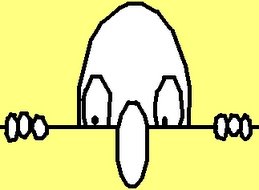This is an operational model that has been used before and has no guarantee of success. The plan depends upon several critical factors:
- Enough battlefield success to sustain US popular support over the life of this operation (and to support the necessary fiscal expenditures during a time of economic hardship at home).
The degree of support and participation by our NATO and other Allies will be a critical factor here since the lack of such support will immediately raise questions about why the US is shouldering the burden alone. - The preservation, at least, and preferably the development of greater popular support in Afghanistan for the Karzai government in Kabul. [The history of Afghanistan repeatedly shows that governments popularly perceived as having been imposed by outside powers do not last long against traditional clan and tribal and today Mujahidin leadership.]
- The successful expansion and improved effectiveness of Kabul’s own forces as the currently 95,000 man Afghan army is increased to 240,000 by 2013, and the 92,000 man police force grows to 160,000.
- Continued and effective efforts by Pakistani forces to prevent the use of its territory as a secure ‘rear area’ by forces fighting against the US-led coalition/Kabul government forces.
As difficult as it will be to achieve goals one, two, and four, the toughest challenge may well be the effective expansion of the Afghan’s own security forces. The major challenge of this effort is the need to identify, recruit, and train the non-commissioned officers (corporals and sergeants) who make up the backbone of 20th Century armies based upon our own experience throughout that century and into the present conflict.
The US has experienced this kind of expansion of its own forces several times in history. On January 1, 1861, the United States Army consisted of 16,367 men (1,704 of whom were absent from duty). On May 1, 1865, after the surrender of the Confederacy and its armies, the United States Army (counting both Regulars and Volunteers) numbered 1,000,516 men (202,709 of whom were recorded as absent from duty). Under President Lincoln’s leadership, the US Army had increased to more than 60 times its pre-war size. A critical element of that expansion was the necessity of identifying men to fill the non-commissioned ranks of this rapidly growing army – each 1,000 man Civil War Union Army regiment included more than 130 sergeants and corporals in that number – meaning that the Army as a whole needed 130,000 non-commissioned officers.
The Army manuals of the period, from which most of the newly minted Union Army officers learned their trade, encouraged the selection of NCOs for the regiment from among the ranks of what were called “intelligent soldiers,” i.e., men who demonstrated more awareness and understanding of what needed to be done and when as compared to those many soldiers who simply awaited orders. These NCOs also had to be able to read and write to fulfill the full range of their duties and many of them rose into the officer ranks as the war continued.
With changes in war and warfare since then, standards for and what is expected of NCOs has risen considerably. Historian Michael Doubler in his Closing With The Enemy: How GIs Fought the War in Europe, 1944-1945, described how American Generals called the urban warfare encountered by US troops in Europe in 1944 and 1945 “a corporal’s war.” This reflected the reality that in warfare in an urban setting, the battle was fought and decided by the decisions of the corporals leading sections of men as they fought street by street, building by building, and room by room – not a style of warfare in which divisions, corps, and armies and their commanding generals could affect the outcome as effectively.
Most of the fighting in both Iraq and Afghanistan is in many ways similar as both of these wars are fought by small units operating in patrols or manning outposts, rather than by the grander formations of battalions, brigades, divisions, corps, and armies usually depicted by those big arrows on the maps. The burden of leading these new Afghan army and police units into the hills and onto the streets of Afghanistan will fall to the newly trained NCOs [and junior officers - lieutenants and captains], but most of them will have only a little bit more (if any more) training than the men they are leading. The US attempted something similar with “Vietnamization” during the conflict in Vietnam, with well known results.
So many of the Emperor Napoleon's Marshals and senior General officers had served in the ranks of the non-commissioned officers of the old French Royal Army that it was said that in his Grande Armee the corporals marched with a Field Marshal's baton in their knapsacks. It will be critical in Afghanistan for a sufficient number of its recruits and soldiers carry corporals' and sergeants' stripes in their packs, pockets, or persons.

